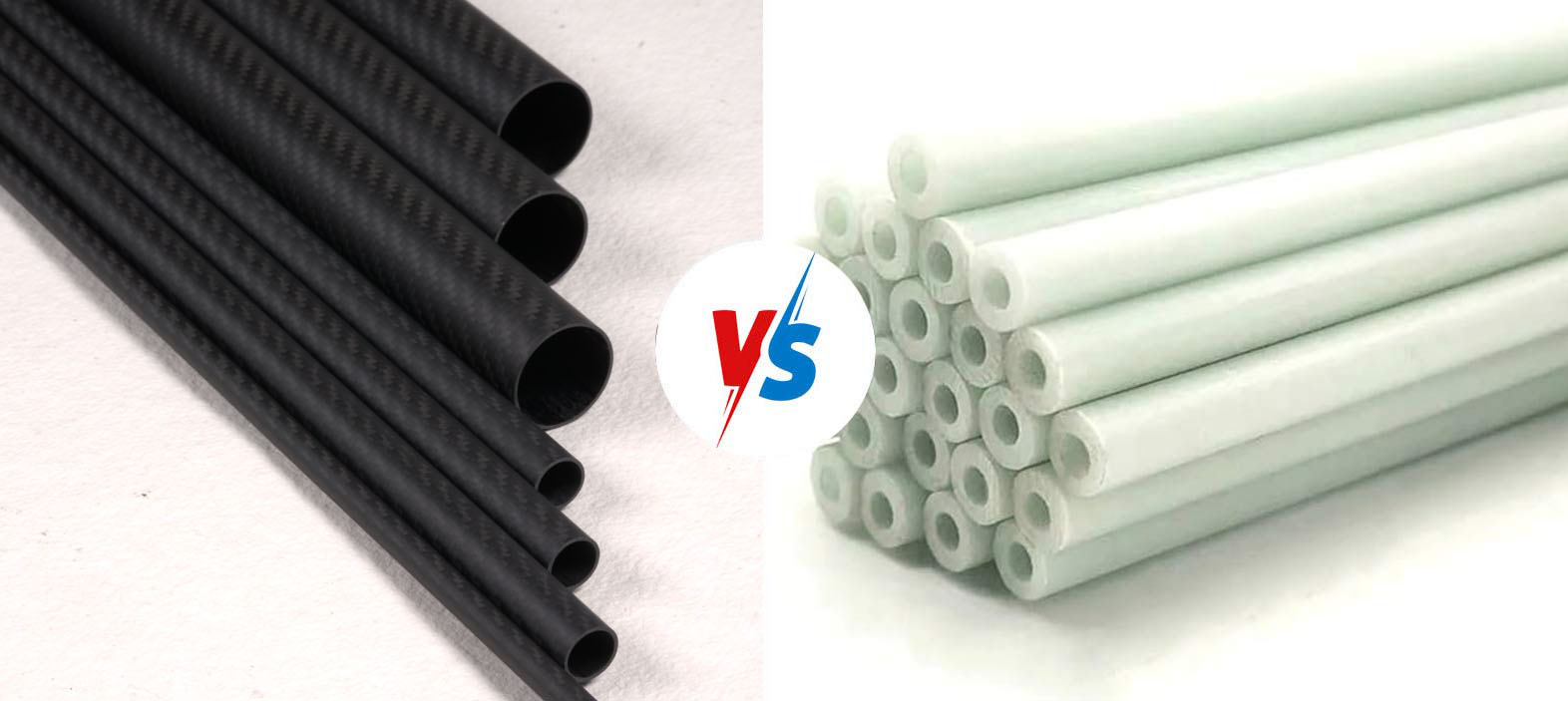
Carbon Fiber vs. Fiberglass Tubing: Which is Superior?
👁 Reads: 489
Few comparisons in the world of structural materials get as much attention as that between fiberglass and carbon fiber tubing. Fiber-reinforced plastic (FRP) is made of glass that has been melted and extruded under high pressure. The resulting material strands are then mixed with an epoxy resin. Long chains of carbon atoms are what make up carbon fiber. Afterwards, thousands of fibers are joined to create tow, also known as strands of bundled fibers.
These threads can be laid flat to make a "Unidirectional" material or woven together to create a fabric. At this point, it's mixed with epoxy glue to make anything from satellites and race cars to tubing and flat plates. Fiberglass and carbon fiber products each have advantages and uses, but which is better?
While both carbon fiber and fiberglass are utilized in the production of high-performance composite goods, each has advantages and characteristics of its own. We will examine the characteristics, benefits, and downsides of fiberglass and carbon fiber tubing in this post to see which is better in certain situations.
Understanding Carbon Fiber Tubes and Fiberglass Tubing
Carbon fiber tubes are well known for their remarkable stiffness, corrosion resistance, and strength-to-weight ratio. Specifically, prepreg carbon fiber tubes are made by pre-impregnating carbon fiber cloth with resin, which is subsequently cured under pressure and heat to create a robust and long-lasting composite structure. The end product is a tube with performance that is unmatched in sporting goods, automotive, marine, and aerospace applications.
Carbon fiber tubes have a density of 1.6g/cm³ and a tensile strength of roughly 1500MPa. The carbon fiber composite material's coefficient of thermal expansion is -1.4x10-6, ensuring that the product size is stable and difficult to deform. The carbon fiber tube's fatigue strength limit is between 70% and 80% of its tensile strength.
The method of making fiberglass tubes involves impregnating glass fiber cloth with resin and curing it to create a stiff composite structure. A single fiber's diameter ranges from a few microns to more than 20 microns. In addition to being less expensive, fiberglass offers superior insulation and resistance to heat and corrosion.
Glass fiber tube has the following specifications: tensile strength of 100–300 MPa, modulus of elasticity of 7000 MPa, elongation at break of 1.5–4%, Poisson's ratio of 0.22, coefficient of thermal expansion of 4.8x10-4. Its density is 2.53–2.55g/cm³, making it heavier than a carbon fiber tube of the same specification. It is not permitted to carry stress greater than 60% of the ultimate stress because of the relatively significant strain amount. At strain levels of 1% to 2%, the resin would fracture.
Carbon Fiber Tubes vs. Fiberglass Tubing: A Comparison
Strength and Stiffness
Fiberglass is the recommended material for uses that don't call for the highest level of stiffness, such as body panels, protective helmets, storage tanks, and building insulation. On the other hand, carbon fiber tubes are stiffer and have a higher tensile strength than fiberglass tubing. Because of this, they are perfect for uses where load-bearing capability and structural integrity are crucial.
Durability
If "toughness" is the measure of durability, fiberglass wins hands down. Flexibility has a direct bearing on fiberglass's capacity to tolerate greater forces. Granted, carbon fiber is stiffer than fiberglass, but that rigidity also makes it less resilient. Furthermore, carbon fiber has marginally superior impact resistance and glass fiber tubing has deeper high-temperature resistance.
Corrosion Resistance
Although both materials have strong corrosion resistance, carbon fiber tubes perform better in hostile environments than fiberglass tubing because of their increased durability and chemical resistance. The majority of acids, bases, oxidizing agents, metal salts, reducing gasses, and sulfur gases cannot harm fiberglass tubing. Because fiberglass tubing is an insulator, it is resistant to galvanic corrosion and electrical conductivity.
Rigidity
The ability of a material or structure to withstand elastic deformation in the presence of force is known as rigidity; glass fiber performs somewhat worse in this regard than carbon fiber tubes. Fiberglass is appropriate for usage in items like helmets and other items where stiffness is required.
Cost
The market for carbon fiber products and fiberglass has expanded significantly over the years, but the difficulties and length of time required to manufacture carbon fiber items (like prepreg carbon fiber tubes) have resulted in lower pricing for fiberglass materials. In high-volume applications where low unit cost is a priority, fiberglass is widely used.
Weight Savings
Because carbon fiber tubes are substantially lighter than fiberglass tubes, they perform better in applications where weight is a factor.
Conclusion
In conclusion, there are differences between fiberglass and carbon fiber tubes. The particular needs of the application ultimately determine whether to use fiberglass or carbon fiber tubing. Carbon fiber tubes are the best option when it comes to strength, stiffness, weight reduction, and corrosion resistance, even though fiberglass tubing is more affordable and has decent electrical and thermal insulation qualities.
Carbon fiber tubes are the obvious choice for high-performance applications where durability and performance are crucial, like sporting goods, automotive, and aerospace. However, for applications where cost is a primary consideration and performance requirements are less demanding, fiberglass tubing may offer a more economical solution. Ultimately, both materials have their place in the world of structural engineering, offering engineers and designers a range of options to suit their project needs.





